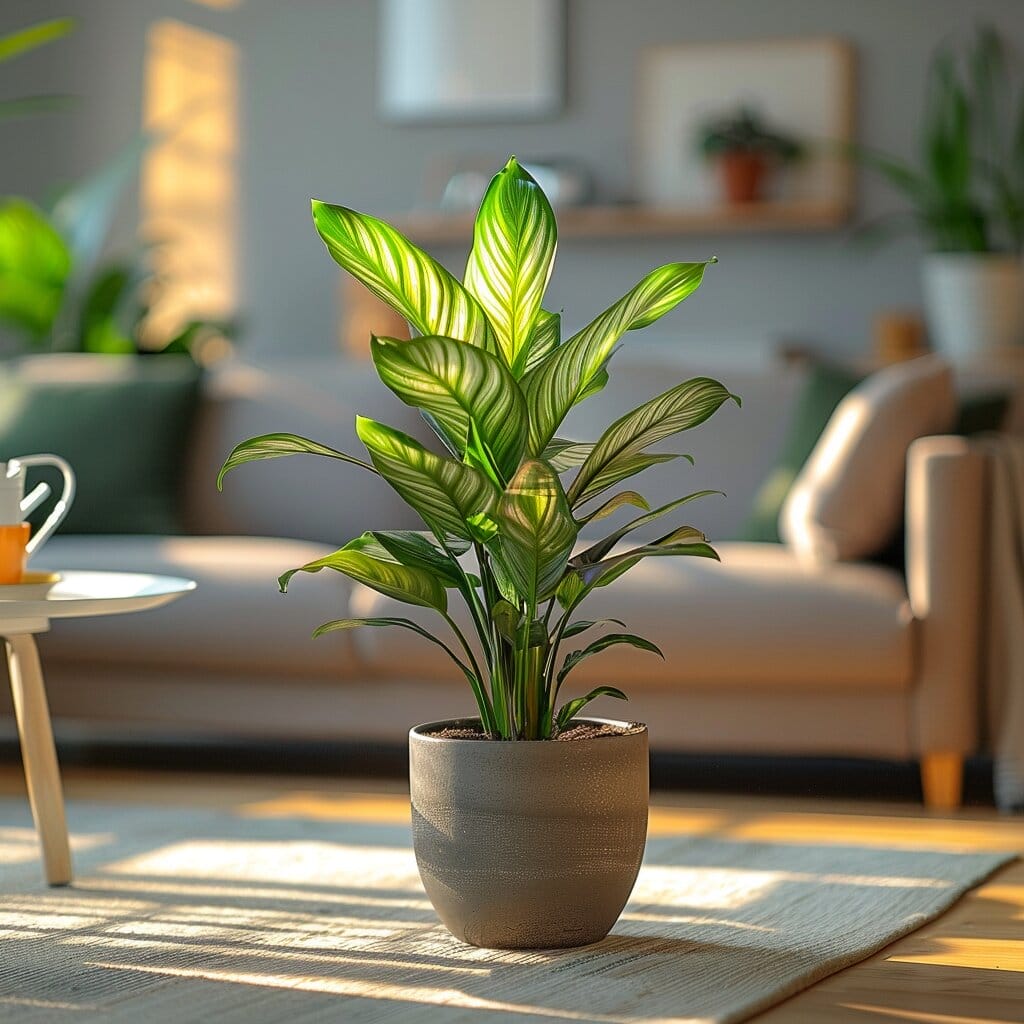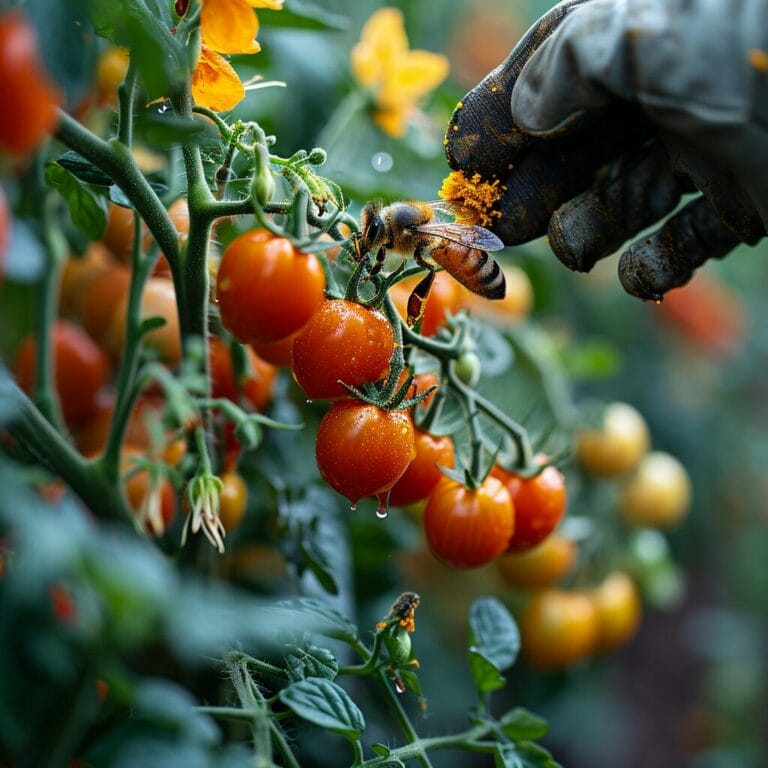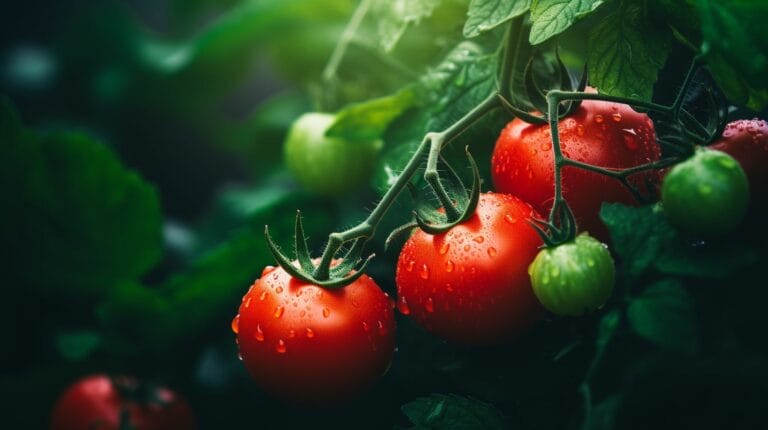Zebra Plant Care Indoor: A Complete Guide for Aphelandra Squarrosa in 2024
When properly cared for indoors, the zebra plant, or Calathea zebrina as it’s also known, can flourish and become a standout feature in any living space.
This guide for 2024 delves into nurturing these striking plants, ensuring lush leaves and potential yellow flowers by understanding their specific conditions to thrive.
From light requirements to pest management, each aspect plays a pivotal role in your zebra plant’s success. Explore the intricacies of zebra plant care for a thriving indoor garden.
Key Takeaways
- Maintain consistent watering and proper fertilization for healthy zebra plants, as both under and over-watering can cause the leaves to scorch or the plant to never reach its full potential.
- Place zebra plants in bright, indirect light with suitable temperatures to promote the health of their dark green leaves.
- Watch for signs of stress like yellow leaves and adjust care accordingly.
- Propagate through stem cuttings and repot when necessary for optimal growth of your Calathea zebrina, ensuring it thrives and possibly blooms.
Understanding Your Zebra Plant: A Comprehensive Care Guide for Plant Parents
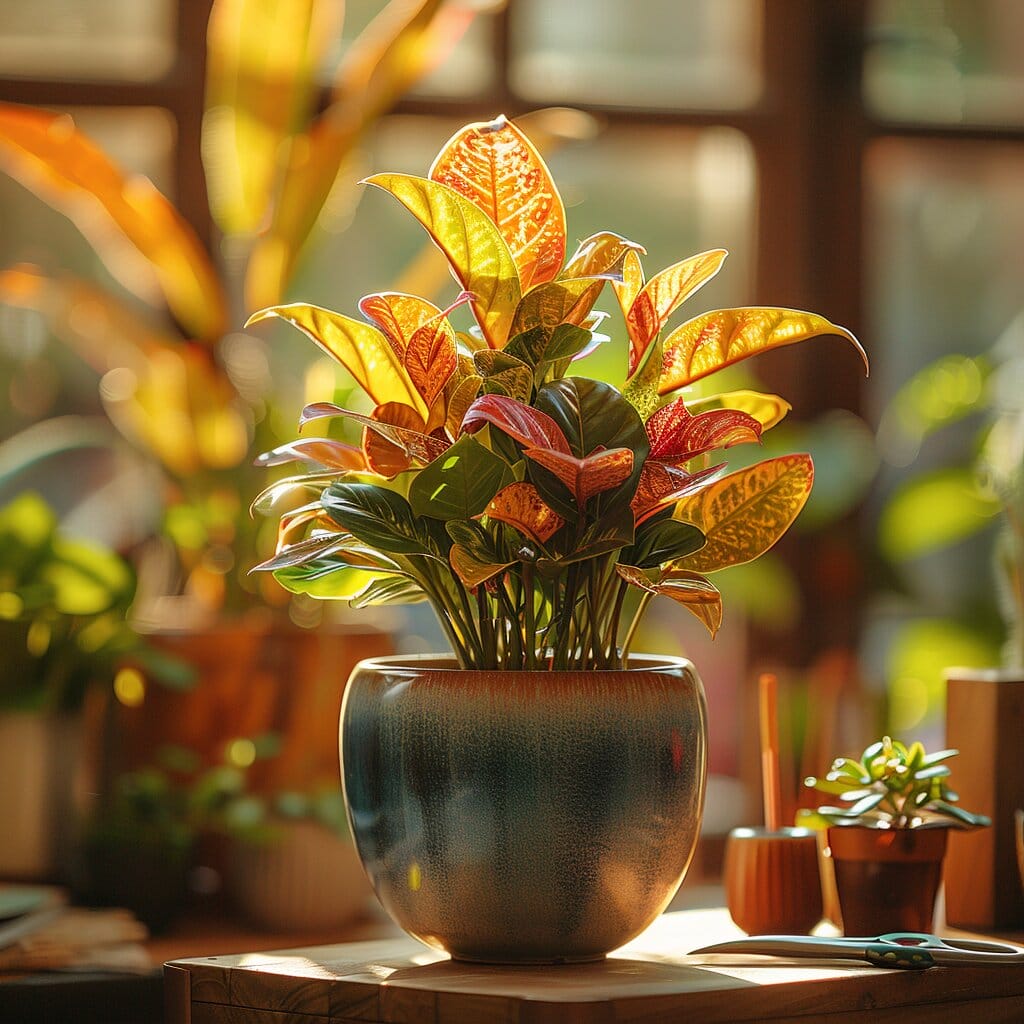
Understanding the unique characteristics of your zebra plant, scientifically known as Aphelandra Squarrosa, is crucial for successful growth. These indoor plants have striking foliage with waxy, striped leaves resembling a zebra’s pattern.
Care involves consistent watering when the top inch of soil is dry, preventing root damage or excess water harm.
Fertilizing is essential for zebra plants, supporting growth and vibrant dark green leaves. Use a balanced liquid fertilizer every 4-6 weeks during the growing season, avoiding overfertilization.
This ensures the well-being of your zebra plant, promoting health, vibrant foliage, and potential yellow flower development.
Setting up Your Zebra Plant at Home: Choosing the Right Pot and Location Indoors
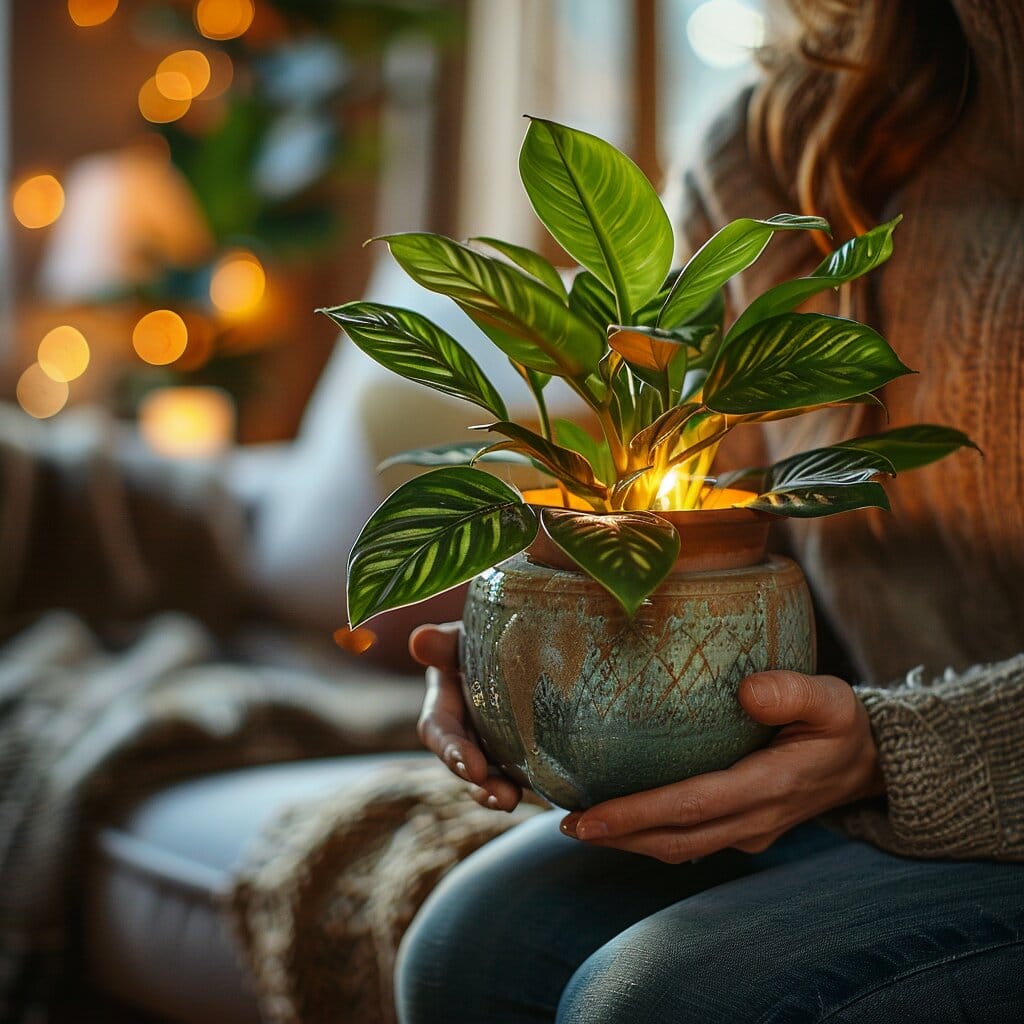
Choosing the right pot size and location is crucial for the optimal growth of your zebra plant. Consider the plant’s root system and growth habits when selecting a pot.
Ensure it accommodates the plant’s size at maturity to prevent issues like stunted growth and root rot. Selecting an appropriately sized pot is essential for providing the best care for your zebra plant at home.
| Zebra Plant Size | Ideal Pot Size for tropical plants with dark green leaves, ensuring the base of the plant has enough room to support growth. |
|---|---|
| Small (6-12 inches) | 6-8 inches in diameter, which is often ideal for a houseplant like the zebra plant to prevent crowding and facilitate healthy root growth. |
| Medium (12-24 inches), perfect for supporting the vibrant, dark green leaves of tropical plants like the zebra plant, Calathea zebrina, which can also produce beautiful yellow flowers when kept in optimal conditions. | 8-10 inches in diameter, suitable for maintaining the lush green leaves of your plant. |
| Large (24+ inches) zebra plants grow best in conditions that mimic their natural habitat, with sufficient indirect light; it’s essential to move the plant to an area where it can receive this type of light. | 10-12 inches in diameter, which is typical for a mature zebra plant, considering it’s a slow-growing plant. |
Zebra plants thrive in bright, indirect light but should be shielded from direct sunlight to prevent leaf scorching and browning.
Ideal temperatures range from 65-75°F (18-24°C), and high humidity is preferred. Ensure the plant is in a suitable environment with proper pot size, light, temperature, and humidity for optimal growth.
Watering and Fertilizing Your Zebra Plant: Key Aspects of Plant Care
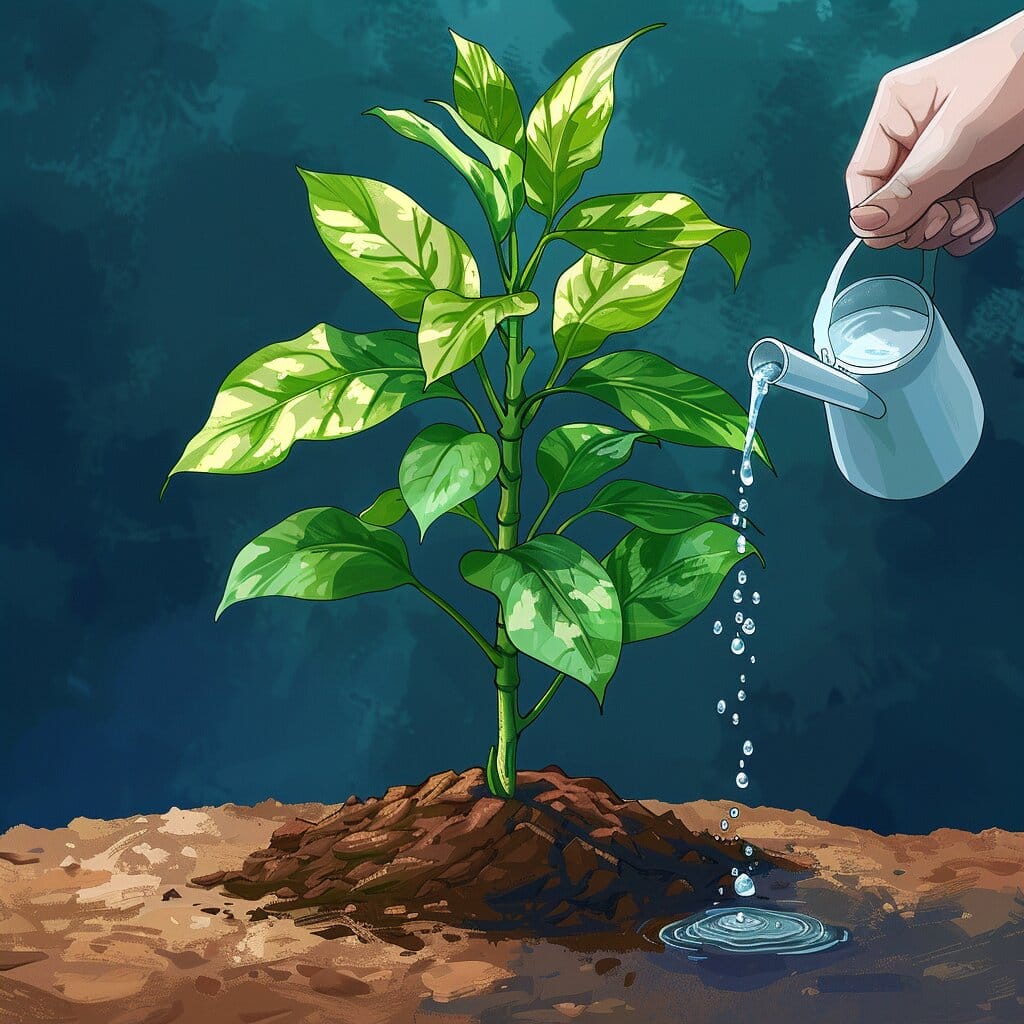
For optimal growth of your zebra plant, balance watering to avoid excess and maintain consistent soil moisture. Water every 1-2 weeks when the top inch of soil is dry, preventing waterlogging and root rot.
Use a half-strength balanced liquid fertilizer for vibrant leaves and occasional yellow flowers. Fertilize every 4-6 weeks in the growing season, avoiding winter applications. Apply to damp soil to prevent root burning, and adjust frequency based on signs of nutrient deficiency like yellowing leaves.
Keeping Your Zebra Plant Healthy: Troubleshooting Common Issues

When caring for your zebra plant, watch out for signs of distress, such as yellow leaves and wilting.
These symptoms often indicate underlying problems that need attention, particularly in tropical plants like the zebra plant, and are addressed in our plant care guide. Here are some common issues you may encounter with zebra plants grow:
- Yellow Leaves: This may indicate that the plant may require more consistent watering or a move to an area with more appropriate lighting. If your zebra plant’s leaves are turning yellow, it could be a sign of overwatering, nutrient deficiencies, or pests.
- Wilting: Wilting can be caused by underwatering, overwatering, or environmental stress. Check the soil’s moisture regularly and adjust watering habits accordingly. The zebra plant prefers temperatures between 65°F and 80°F for optimal growth.
- Common Diseases and Pests: Keep an eye out for diseases like fungal leaf spot and pests such as whitefly and mealybugs. Early detection is key to managing these issues effectively, particularly in ensuring the zebra plant’s indoor care is optimal.
What are the Best Care Practices for Zebra Plants Indoors?
When it comes to zebra plant care indoors, it’s important to provide plenty of bright, indirect light and ensure the soil is well-draining. Keep the soil consistently moist, but not waterlogged, and apply a balanced, water-soluble fertilizer monthly during the growing season. Prune to maintain a compact shape.
Repotting tropical plants can give your zebra plant a new lease on life.
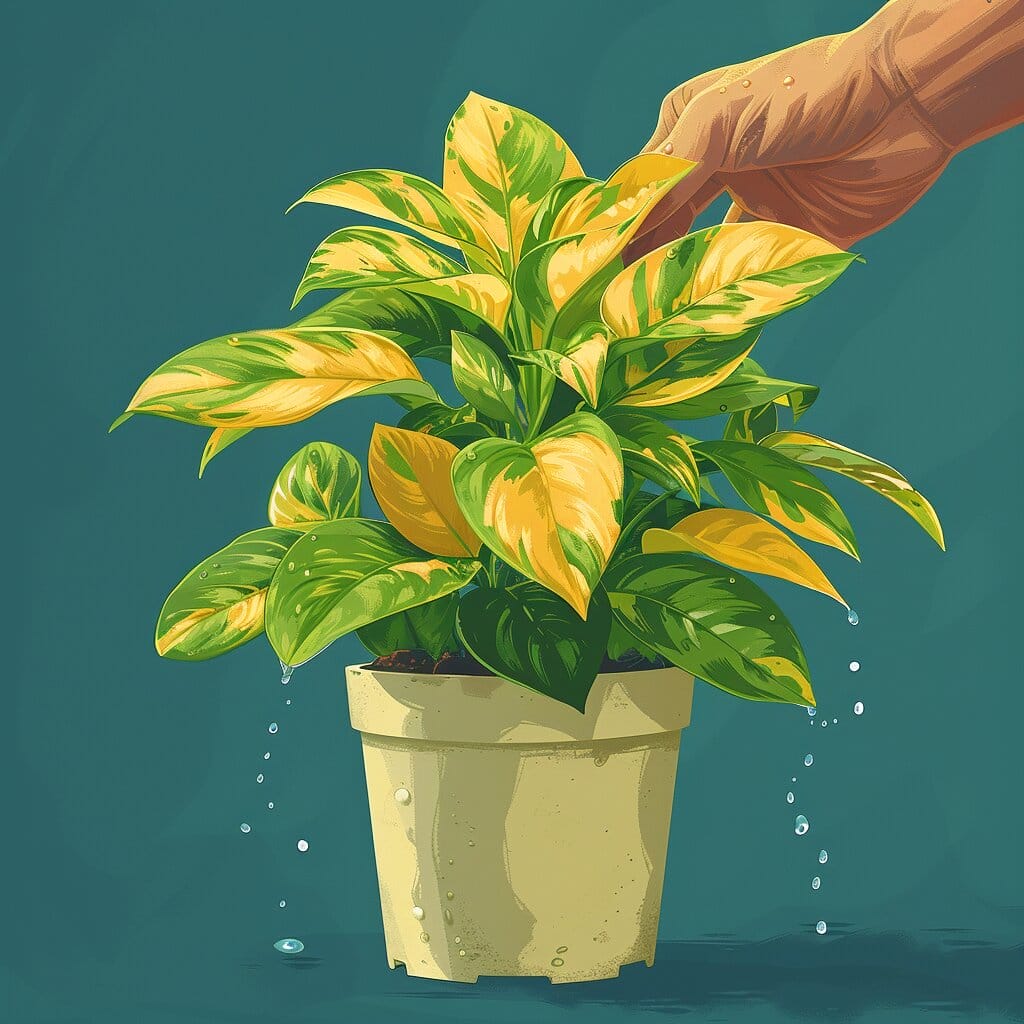
When propagating and repotting your zebra plant, consider the growth stage and root health for successful rejuvenation. Monitor these aspects closely.
Propagate by taking stem cuttings in spring or summer with at least two nodes for root growth. Place in well-draining soil, keep in a warm, humid environment with indirect light, and transplant into a slightly larger pot once roots develop.
| Step by Step Zebra Plant Guide | Description |
|---|---|
| Propagation | Take stem cuttings with at least two nodes in spring or summer. |
| Soil and Environment are key factors in the care for a zebra plant, as it prefers specific conditions that support its delicate balance between moisture and light exposure. | Plant cuttings in well-draining soil, maintain warmth, humidity, and light. |
| Root Development for zebra plants can significantly be enhanced by placing the plant in an environment that mimics their natural tropical habitat, as the zebra plant prefers such settings for optimal growth. | Wait for roots to establish before transplanting into a larger pot. |
| Repotting | Repot your zebra plant when it outgrows its current container. |
| Post-Repotting Care ensures your “zebra plant” adapts well to its new environment, highlighting the importance of ongoing observation and adjustment in houseplant maintenance. | Water lightly, avoid direct sunlight, and monitor for signs of stress. |
Knowing when to repot your zebra plant is crucial for its well-being, a key aspect of any plant care guide. If the roots are visibly overcrowded, or the plant starts showing signs of stunted growth, it’s time to consider a larger pot for the base of the plant, an essential part of care for a zebra plant.
Post-repotting care for a zebra plant involves gentle watering, avoiding direct sun to limit stress on the leaf tips, and close observation for any adjustments needed to ensure it thrives in its new environment.
Conclusion
Caring for zebra plants indoors can be a rewarding experience with the right knowledge and practices, emphasizing the ease in care for a zebra plant with proper attention to its needs and ensuring the soil has time for water to completely drain.
By providing them with the proper light, humidity, water, and attention to potential issues, you can enjoy the beauty and vibrancy of these stunning plants in your home.
Stay vigilant, be proactive in maintenance, and watch your zebra plant thrive and flourish, using our plant care guide as a reference to provide proper care. Happy gardening! Remember to keep your plant in top condition by following this plant guide.
Frequently Asked Questions
What are some basic care tips for a zebra plant?
Zebra plants thrive in indirect light, prefer humid environments where you might use a humidifier, and should be watered thoroughly but not excessively to avoid root rot due to excess water. Ensure to water the plant to saturation every time but allow proper drainage.
How often should I fertilize my zebra plant?
It is recommended to fertilize your zebra plant every 4-6 weeks during the active growing season in spring and summer.
What are the common types of zebra plants available?
Some common types of zebra plants include Aphelandra squarrosa and Calathea zebrina, both known for their striking foliage.
How to Do zebra Plant care indoor?
To encourage blooming, provide your zebra plant with adequate humidity, indirect light, and a consistent fertilizing schedule.
What is the best way to propagate a zebra plant?
Zebra plants can be propagated by division or stem cuttings in the spring or summer months for best results.

